The Live Album
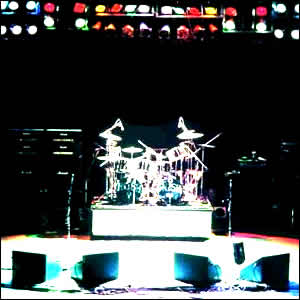 We pretty much cover studio albums exclusively at Classic Rock Review and will continue to do so with the exception of the few studio/live hybrids that we explore later in this article. The reason we do this is because of the generally ubiquitous nature of these live albums as well as the inconsistency in sound and the art of production. In short, we feel the only true way to hear a band live is to hear a band live and we’ll stick to that whole other entertainment art form, the studio album. However, this surely does not mean that the live album has now place in the world of classic rock. So today we will examine some of the more important live albums through time, with a special look at 1976, the current year we are reviewing with our regular features and one year that was especially rich with quality live albums.
We pretty much cover studio albums exclusively at Classic Rock Review and will continue to do so with the exception of the few studio/live hybrids that we explore later in this article. The reason we do this is because of the generally ubiquitous nature of these live albums as well as the inconsistency in sound and the art of production. In short, we feel the only true way to hear a band live is to hear a band live and we’ll stick to that whole other entertainment art form, the studio album. However, this surely does not mean that the live album has now place in the world of classic rock. So today we will examine some of the more important live albums through time, with a special look at 1976, the current year we are reviewing with our regular features and one year that was especially rich with quality live albums.
The Classic Live Albums
Ever since Thomas Edison invented the phonograph in 1877 there have been live recordings, starting with the the first commercially available music recordings in the 1880s. All recordings were “live”, whether in a studio or concert hall for about 70 years until the 1950s when the first multi track recordings began. But it wasn’t really until 1960s when the true distinction of a live album was made. Although rock n’ roll would be the genre most strongly tied to the live album, two of the most influential recordings came from artists tied mainly to other styles, James Brown and Johnny Cash.
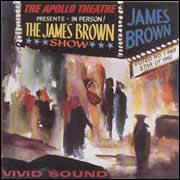 Live At the Apollo was recorded on October 24, 1962 at the famed theatre in Harlem, New York and released the following year. It was produced at Brown’s expense when his record label opposed the concept of recording an album full of live versions of songs which had already been released. To everyone’s surprise, Live At the Apollo sold rapidly and spent more than a year on the Billboard Pop Albums chart. It was so popular that many radio DJs began playing the album in its entirety, only pausing for commercials during the side break.
Live At the Apollo was recorded on October 24, 1962 at the famed theatre in Harlem, New York and released the following year. It was produced at Brown’s expense when his record label opposed the concept of recording an album full of live versions of songs which had already been released. To everyone’s surprise, Live At the Apollo sold rapidly and spent more than a year on the Billboard Pop Albums chart. It was so popular that many radio DJs began playing the album in its entirety, only pausing for commercials during the side break.
Live At the Apollo feature at Roots Rock Review
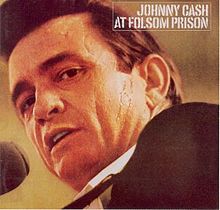 Johnny Cash met much of the same resistance from his own record label when he proposed recording an album live at the prison he made famous over a decade earlier with his song “Folsom Prison Blues”. The album was recorded at the state prison in California during two shows on the morning and afternoon of January 10, 1968 and released later that year. Cash was supported in this project by his future wife June Carter, his backing band The Tennessee Three, supporting act The Statler Brothers, as well as then-California Governor Ronald Reagan, but with little investment by Columbia records. Nonetheless, the album still rocketed to number one on the Country Charts and the top twenty on the mainstream charts. Further, the album revitalized Cash’s career and lead to his producing a second prison album, At San Quentin.
Johnny Cash met much of the same resistance from his own record label when he proposed recording an album live at the prison he made famous over a decade earlier with his song “Folsom Prison Blues”. The album was recorded at the state prison in California during two shows on the morning and afternoon of January 10, 1968 and released later that year. Cash was supported in this project by his future wife June Carter, his backing band The Tennessee Three, supporting act The Statler Brothers, as well as then-California Governor Ronald Reagan, but with little investment by Columbia records. Nonetheless, the album still rocketed to number one on the Country Charts and the top twenty on the mainstream charts. Further, the album revitalized Cash’s career and lead to his producing a second prison album, At San Quentin.
Review of Johnny Cash At Folsom Prison
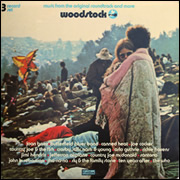 A third mega-successful live album from the recordings in the 1960s was the Woodstock soundtrack, a 6-sided triple album released on May 11, 1970. The album was unique at the time not only because of the variety of performers (18 different artists performed on the original version), but also for its “feel” as just about each track contained stage announcements and conversations among the musicians, which acted as a narrator of the overall Woodstock story. The original LP was also laid out with side one backed with side six, side two backed with side five, and side three backed with side four, to accommodate the popular record changer turntables, something which would become standard for most multi-disk live albums.
A third mega-successful live album from the recordings in the 1960s was the Woodstock soundtrack, a 6-sided triple album released on May 11, 1970. The album was unique at the time not only because of the variety of performers (18 different artists performed on the original version), but also for its “feel” as just about each track contained stage announcements and conversations among the musicians, which acted as a narrator of the overall Woodstock story. The original LP was also laid out with side one backed with side six, side two backed with side five, and side three backed with side four, to accommodate the popular record changer turntables, something which would become standard for most multi-disk live albums.

Starting in 1970, a prolific period of several top-notch live recordings began. That year featured many great live albums such as Live At Leeds by The Who, Absolutely Live by The Doors, Band of Gypsys by Jimi Hendrix, and Mad Dogs and Englishmen by Joe Cocker, which had sales fueled by his impressive performance on the the a fore-mentioned Woodstock soundtrack. Subsequent years saw more classic live recordings such as At Filmore East by the Allman Brothers in 1971, Made In Japan by Deep Purple in 1972, Yessongs by Yes in 1973, Alive by Kiss in 1975, along with a couple of original live recordings by the Grateful Dead.
As the golden age of live albums started to wane in the late seventies and early eighties, the quality live albums were fewer and further between. In 1978 Aerosmith released the fine Live Bootleg while the newcomers Cheap Trick released At Budokan. The Eagles finished off their remarkable career with Eagles Live in 1980 while another band with a long career capitalized on their new found fame with Showtime! in 1982. The following year, U2 displayed their talents on Under a Blood Red Sky.
The great live album that never was should have been released following the plethora of great performances at Live Aid in 1985. No traditional “album” was released from these performances with a four DVD set finally coming out in 2004.

Live Albums in 1976
At this article’s date of publication, the year the Classic Rock Review is examining is 1976, which also happened to be a very strong year for live recordings. In fact, the deliberation on whether to cover some these live albums with regular reviews is what initially sparked the idea for this special feature. So we’ll give a little bit of special attention to some of the great live albums from the bicentennial year.
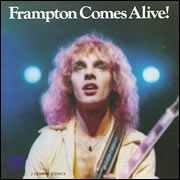 Frampton Comes Alive! by Peter Frampton
Frampton Comes Alive! by Peter Frampton
Released January 6, 1976 (Double LP)
Perhaps one of the most successful commercial live albums ever, Frampton Comes Alive! was a double live that sold at a price comparable to “single” albums of the day. This marketing scheme may have incentivized fans to check out this artist whose previous four solo albums had little commercial success, but it was the quality of the material and performance that created the snowball effect making this a true breakthrough for Frampton.
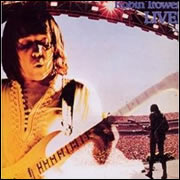 Robin Tower Live by Robin Tower
Robin Tower Live by Robin Tower
Released March 3, 1976 (Single LP)
Recorded in Sweden over a year before its release, this album by a true power trio lead by the former axeman of Procol Harum captures the group extremely loose and freewheeling. This is because the shows were recorded by the Swedish Broadcasting Company while the band was completely unaware that the show was being taped.
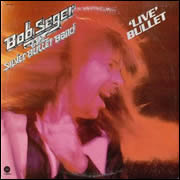
Released April 12, 1976 (Double LP)
Live Bullet forecast the popular rise of Bob Seger by first becoming a staple on Detroit rock radio and later reaching a much further audience due to some of the timeless classics on the album. Although Seger’s success was still mainly regional, this album played a large role in him headlining before 78,000 at the Pontiac Silverdome in June 1976.
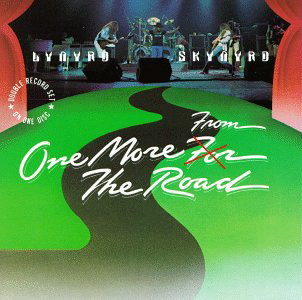
Released September 13, 1976 (Double LP)
This was Lynard Skynard’s first, and sadly last live album during the “classic” era of the band, which ended with a plane crash in 1977 that killed several members. The version of “Freebird” propelled that then-five-year-old song into FM radio super status for decades to come.
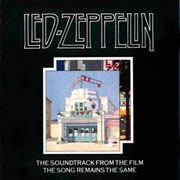
Released September 28, 1976 (Double LP)
Led Zeppelin was a fantastic live act, as we later found out from the various bootlegs and eventual collections released in the 1990s and 2000s. Unfortunately, the band’s only concerted effort at capturing the live magic was done during a couple of sub-par shows at the end of their 1973 tour. Producer Jimmy Page and the band spent three years overdubbing and patching in both audio and video for the dual film and soundtrack. It was great because it was Zeppelin live and it was all we had for decades. But it could have been so much greater.
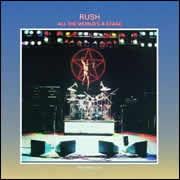
Released September 29, 1976 (Double LP)
All the World’s a Stage was the first live album by Rush, marking the conclusion of the first four studio, one live album “phase” of the band. They would repeat this pattern several more times through their long career. The performances were recorded in June 1976 in the trio’s home city of Toronto.
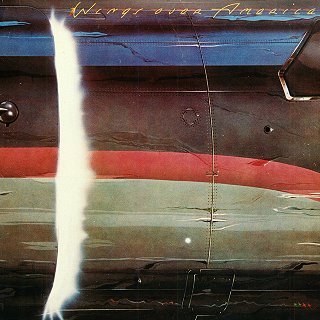
Released December 10, 1976 (Triple LP)
A decade after the Beatles stopped playing live gigs, fans finally got a chance to hear Paul McCartney perform live with his new band, Wings. Although the triple album was made up mostly of songs from McCartney’s post-Beatles career, Wings Over America did offer five Beatles songs becoming the most modern recordings to date of these compositions.
Hybrid Albums
Through the years there were a select number of albums which contained a hybrid of live and recorded material. These include Cream‘s Wheels Of Fire from 1968, Pink Floyd‘s Ummagumma from 1969, Eat a Peach by the Allman Brothers and Everybody’s In Showbiz by The Kinks from 1972, and Rust Never Sleeps by Neil Young & Crazy Horse in 1979. Classic Rock Review may review these as regular albums when the time comes.
Ironically, as more and more live albums proliferated through the 1990s their prestige seemed to wane and fewer and fewer were considered “classic” recordings. This is likely due to the relative simplicity of digital recordings and hence the less capturing of “lightning in a bottle” with live performances. Still, we’ve only just scratched the surface of all the fine live albums through the decades, so please feel free to comment on some of these omissions.
~
Ric Albano


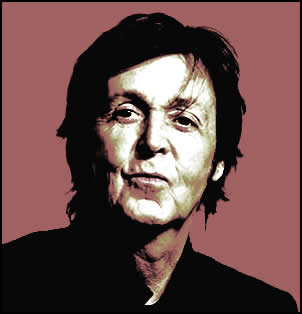
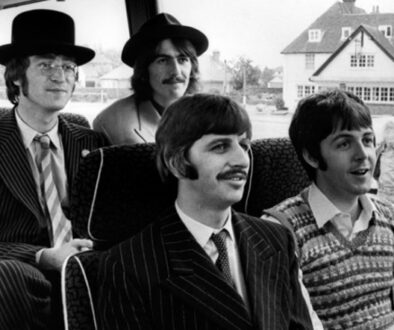
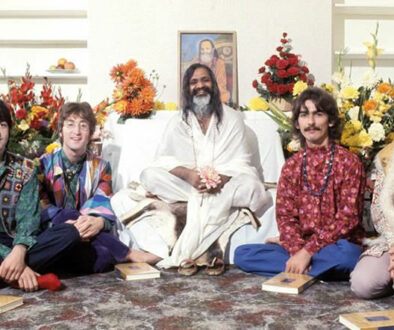
February 1, 2016 @ 4:45 pm
UFO “Strangers in the Night” (1979) was possibly one of the best(quality) live albums.